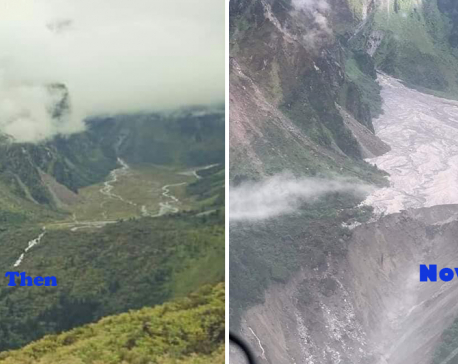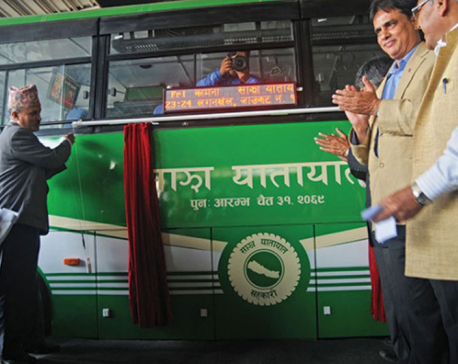
OR
Climate-related disasters
Pictures can sometimes lie. But at other times they can be astonishingly revelatory. On Tuesday, Nepal and China signed three separate agreements on upgrade of Arniko Highway, exploration for oil and gas and inviting private Chinese investment to Nepal. The Chinese side was also reportedly positive about reopening the Tatopani border point with Tibet that has been closed since the 2015 earthquakes. Yet, in the photo-op at the end of the signing ceremony, representatives of both sides looked glum. Widespread loss of life and property in the recent floods in Tarai-Madhes had clearly distracted them. In a way, it turned out to be the worst possible time for Chinese Vice Premier of the State Council, Wang Yang, to come to Nepal. At the last minute, as a token gesture, the Chinese side announced US $1 million in immediate post-flood help. But Nepal also has a lot to learn from China on flood-control. As Al Jazeera recently reported, in 1931, floods along the Yellow River are believed to have killed as many as 400,000 people. China has since made concerted effort to minimize flood damages. By the 1950s the annual flood-related deaths had fallen to around 8,500; by 2000, in a population of 1.3 billion, only around 1,500 people were dying from floods annually.
The Chinese managed to drastically reduce their flood-related deaths due to their strategic dam-building efforts. Every monsoon floods and landslides in Nepal result in disproportionately large number of deaths and destruction of properties. With the world’s attention now trained on Nepal’s submerged plains, now would be the perfect time to ask for Chinese help to build better dams and dykes on our rivers. Before Vice Premier Wang, Indian Minister of External Affairs Sushma Swaraj was in town. We are not sure if Nepal government raised the issue of inundation of Nepali territories through unilateral embankment construction on the Indian side of the border. Or how time has come to replace the ageing Koshi Barrage. Of how the two countries need to work closely to control floods and inundations in their respective territories. Recent floods have affected not just Nepal; nearly two million people have been affected just across the border in the Indian state of Bihar. Every monsoon, politicians in Nepal accuse India of inundating Nepali territories, while their counterparts in India’s Bihar and UP reflexively blame upstream Nepal of not doing enough to control its rivers. If they are serious about the welfare of their people, the two sides should sit down and work out a mutually-agreeable arrangement for flood control.
Recent studies have established a clear link between global warning and unpredictable weather patterns in this part of the world. The countries in the region as such have no option but to work together to mitigate the dangers, for, increasingly, Nepal’s climate-related problems are also India’s and China’s. Geostrategic rivalry between India and China has taken center-stage of late, with small countries like Nepal having to carefully balance the influence of the two rising global powers. Climate is one area where reason dictates that all countries in the region cooperate. We thus hope that Nepal strongly raises climate-related issues in its future bilateral and multilateral dealings and tries to engage India and China more on common climate-related risks.
You May Like This

What experts could be missing about causes of Helambu-Melamchi floods and landslides
KATHMANDU, August 6: Bremathang -- the area in the uplands of Helambu that is said to be the origin of... Read More...

Common framework for GESI launched
KATHMANDU, March 17: Group of development partners working on gender equality and social inclusion (GESI) in Nepal launched ‘A Common... Read More...

Business with a cause
Maybe time has come for Nepali entrepreneurs to launch their own businesses with a social cause ... Read More...




Just In
- Govt receives 1,658 proposals for startup loans; Minimum of 50 points required for eligibility
- Unified Socialist leader Sodari appointed Sudurpaschim CM
- One Nepali dies in UAE flood
- Madhesh Province CM Yadav expands cabinet
- 12-hour OPD service at Damauli Hospital from Thursday
- Lawmaker Dr Sharma provides Rs 2 million to children's hospital
- BFIs' lending to private sector increases by only 4.3 percent to Rs 5.087 trillion in first eight months of current FY
- NEPSE nosedives 19.56 points; daily turnover falls to Rs 2.09 billion















Leave A Comment